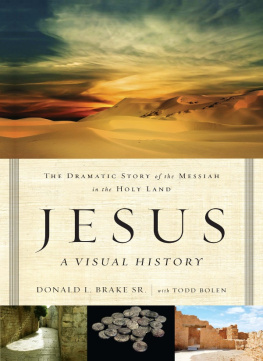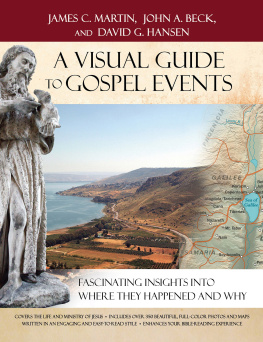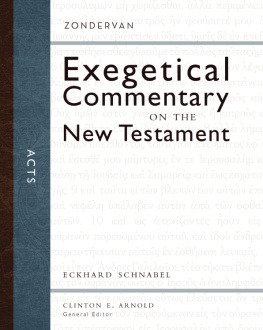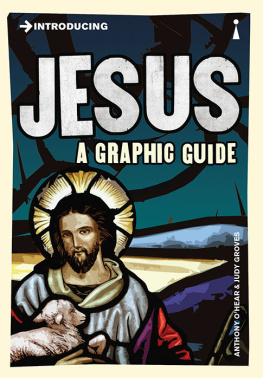
ZONDERVAN
Jesus, A Visual History
Copyright 2014 by Donald L. Brake
ePub ISBN: 978-0-310-51538-8 Copyright July 2014
Requests for information should be addressed to:
Zondervan, 3900 Sparks Dr. SE, Grand Rapids, Michigan 49546
Library of Congress Cataloging-in-Publication Data
Brake, Donald L., Sr., 1939
Jesus, a visual history: the dramatic story of the Messiah in the Holy Land / Donald L. Brake, with Todd Bolen.
p. cm.
Includes bibliographical references and index.
ISBN 978-0-310-51537-1 (softcover)
1. Jesus ChristBiography. 2. PalestineDescription and travel. 3. IsraelDescription and travel. I. Title.
BT301.3.B725 2014
232 dc23
2014003705
All Scripture quotations, unless otherwise indicated, are taken from The Holy Bible, New International Version, NIV. Copyright 1973, 1978, 1984, 2011 by Biblica, Inc. Used by permission. All rights reserved worldwide.
Scripture quotations marked KJV are taken from the King James Version of the Bible.
Scripture quotations marked NASB are taken from the New American Standard Bible. Copyright 1960, 1962, 1963, 1968, 1971, 1972, 1973, 1975, 1977, 1995 by The Lockman Foundation. Used by permission.
All photos, unless otherwise noted, are from the photo library of Todd Bolen, Todd Bolen, used by permission.
Any Internet addresses (websites, blogs, etc.) and telephone numbers in this book are offered as a resource. They are not intended in any way to be or imply an endorsement by Zondervan, nor does Zondervan vouch for the content of these sites and numbers for the life of this book.
All rights reserved. No part of this publication may be reproduced, stored in a retrieval system, or transmitted in any form or by any means electronic, mechanical, photocopy, recording, or any other except for brief quotations in printed reviews, without the prior permission of the publisher.
Published in association with the literatry agency of Credo Communications LLC., Grand Rapids, Michigan 49525; www.CredoCommunications.net.
Cover design: Studio Gearbox
Cover photography: top: ramzihachicho/www.istockphoto.com; bottom left: D. Brake; bottom middle: Todd Bolen/www.BiblePlaces.com; bottom right:Alex Gulevich/www.123RF.com
Interior design: Matthew Van Zomeren
To my wife, Carol, the original Wonder Woman.
From a blind date to life partner, mother of my children, grandmother of my grandchildren, and love of my life for sixty years.
CONTENTS
IT MUST HAVE BEEN SAID SOMEWHERE, It takes a village to publish a book. Books published in the modern age are not just facts and information. They present the authors message and intention in a readable style and graphic format. For this reason, a book produced today requires the efforts of many gifted men and women who spend a great deal of time practicing their art. This book is no exception. Authors are bolstered by generations of accumulated knowledge and expertise by authors of the past. The bibliography in Jesus, A Visual History recognizes many of these men and women who have gone before in the quest for knowledge and the desire to make it known to later generations.
I am pleased to acknowledge a number of specially gifted people who have made this book possible. To them I am deeply grateful.
WRITING AND VISUAL AIDS
My thanks to Todd Bolen, a scholar, historian, and professor experienced in firsthand knowledge of the Holy Land, for his scholarly contributions and suggestions in history, biblical knowledge, and insight. The photos in this book, unless otherwise acknowledged, were provided by Todd Bolen from his Pictorial Library of Bible Lands (www.bibleplaces.com). They are a great resource for teachers and students alike. Additional black-and-white photos from the early twentieth century are freely available to the public from the US Library of Congresss Matson Photograph Collection (www.loc.gov/pictures/collection/matpc/) and in an improved edition, The American Colony and Eric Matson Collection (www.lifeintheholyland.com).
Thanks to award-winning author Shelly Beach for editing for style and offering valuable suggestions on writing and presentation.
Thanks also to artist and illustrator Ron Waalkes, who has faithfully and joyfully labored in producing original artwork that has made a major contribution to the visual appearance of this book.
Thanks to Multnomah librarian, Pam Middleton for her help in tracking down rare and unusual sources.
Thanks to my wife, Carol, for her editing and helpful suggestions not sparing any area of the book from her sharp editorial scalpel.
Bill Schlegel, geographer, historian, teacher, and Holy Land guide, was the first to introduce me to the specific places and events in the life of Jesus. His willingness to share maps from his scholarly and graphic atlas of the Bible, Satellite Bible Atlas: Historical Geography of the Bible, visually enhances the journeys of our Savior.
BOOK PUBLICATION
Literary agent Tim Beals of Credo Communications showed tenacity and persistence in finding an acceptable publisher. He continually encouraged my resolve to see this book published.
My friend David Sanford has encouraged me for several years to write, write, and then write some more.
ZONDERVAN PERSONNEL FOR EDITING AND DESIGN
Thanks to acquisitions editor Madison Trammel for getting this project running and to senior editor Nancy Erickson, for her efforts in accuracy and overall editing expertise. Thanks also to the composition and marketing team for their skill in design and excitement for the project.
Faith comes from hearing the message, and the message is heard through the word about Christ.
Romans 10:17
WE KNOW ABOUT THE LIFE OF JESUS primarily from what we read in the gospels of Matthew, Mark, Luke, and John. As early as AD 170, Tatian wove the stories of the four gospels into one continuous narrative called the Diatessaron. Since that time, readers have used harmonies of the gospel accounts to get a complete picture of the life of Jesus. Modern English harmonies were introduced with the work of J. J. Greisbach in 1776. The Gospels were placed side by side in parallel columns where synoptic material was recorded. This format allowed the reader to see the accounts together, even though the format at times interrupted an individual writers timelines, clarity, and writing purposes.
When the writers of the Gospels composed their accounts, each author utilized source materialIndeed, the four accounts are not just unbiased news reports but theological documents written to instruct and encourage believers and so convince them of the truth presented within.
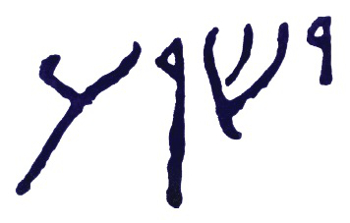
The Hebrew name Jesus (Yeshua) written on a Jerusalem ossuary dating from Jesus time.
While the four accounts of Jesus life are often chronological, the authors did not necessarily desire that every event be presented in sequence; nor did they record a complete biography of Jesus in the sense we use the term today, or explain geographical locations of events. For this reason, a full chronological tracing of Jesus footsteps can be challenging. The most comprehensive story line of the life of Jesus may be found when comparing the four gospels in harmony.
For the purposes of this book, the author has chosen to rely on the NIV Harmony of the Gospels , edited by Robert L. Thomas and Stanley N. Gundry (Harper Collins, rev. ed., 1988), to follow as closely as possible a basic chronological order. Consulting a harmony makes it easier for readers to follow the where and when of Jesus life. (Please note that other versions of harmonies are available and suitable.) The presentation here will provide citation of the gospel accounts in each section and the paragraph number associated with Thomas and Gundrys
Next page
